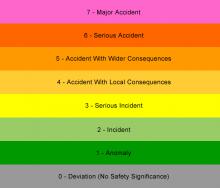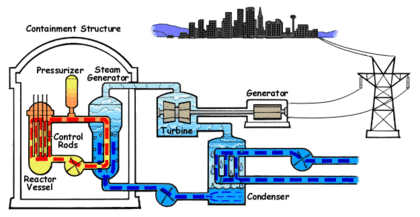On March 11, 2011 a tsunami was triggered by a powerful earthquake off the northeast coast of the Japanese island of Honshu. The huge wave crashed into the coastal Fukushima Number 1 nuclear power plant in Okuma, Fukushima Prefecture and caused a major nuclear disaster.
The Daiichi plant contains six GE boiling water reactors operated by the Tokyo Electric Power Company. The plant was started operation 1971 and ultimately generated almost five gigawatts of electrical power making it one of the fifteen biggest commercial nuclear power plants in the world.
On March 11, 2011 reactors 5 and 6 were in what is called cold shutdown where the pressure of the coolant is at regular sea level atmospheric pressure and the temperature is under two hundred degrees Fahrenheit. Reactor 4 had been defueled (had its fuel removed.)
Following the earthquake, reactors 1, 2 and 3 automatically shut down and emergency diesel generators switched on to provide electricity for reactors controls and coolant circulation pumps. The tsunami caused by the earthquake hit the site and flooded the rooms containing the emergency generators. It also severed the connection of the plant to the electrical power grid. Access to the site was inhibited by the flooding. Newer generators had been built above the flood zone but their connection to the reactors was not protected and was flooded, preventing their use. Attempts to bring in mobile generators failed because they could not be connected to the site power grid.
The reactors were designed for the coolant to continue to circulate for four to eight hours without the circulation pumps operating. After this time elapsed, the operating reactors began to overheat and eventually went into meltdown where the cores of the reactors become so hot that they melted. Hydrogen was generated from overheating of the zinc alloy sheaths of the fuel rods and this resulted in several explosions also occurred. The government ordered seawater to be pumped into the reactors to cool them which completely destroyed them. Water levels also dropped in the pools where fuel rods were kept when they were not in the reactor cores. This raises the prospect of fires and release of more radioactivity. People were evacuated from a circle around the site twelve miles in diameter. People working on the disaster suffered radiation poisoning. Electrical power was eventually restored to some of the reactors and allowed cooling systems to begin operation again. The melting fuel and the exposed rods in the cooling pools remain a grave concern more than a year after the
Radioactive isotopes were released into the atmosphere, the soil and the ground water. Dangerous levels of cesium have been detected over 30 miles from the site. Sale of food grown near the site and use of tap water near the site have been restricted. The Japanese government and TEPCO have been criticized for incompetence in reacting to the disaster and poor communication with the public. Increased radioactivity from the Fukushima disaster has been measured in the Pacific ocean water, and in the air, water and soil of North America. The Fukushima disaster was ultimately rated as Level 7 on the International Nuclear Event Scale.



